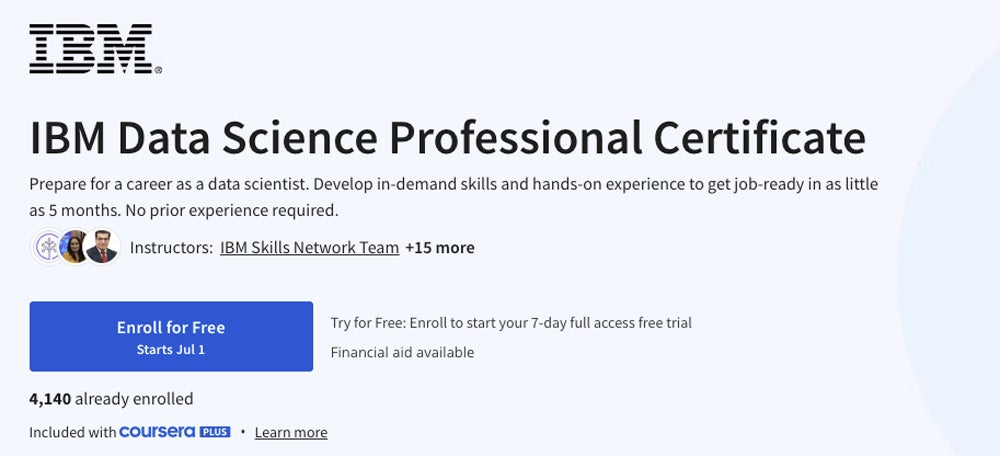
A career in data science involves using statistical, computational and analytical methods to extract insights from data. Data scientists regularly use programming languages like Python and R alongside machine-learning algorithms and data-visualisation software.
The need for data scientists has surged across various sectors, including finance, healthcare and technology, making it a highly sought after and lucrative profession. According to the U.S. Bureau of Labor Statistics, the average annual salary for data scientists in 2023 was $108,020, while demand for them is expected to increase by 35% in the next eight years — much faster than average for all occupations.
SEE: What is Data Science? Benefits, Techniques and Use Cases
Online courses and certifications provide accessible pathways into the field, as many can fit around existing responsibilities like a day job. Such programs provide the expertise required for an individual to land their first data science role or just discover whether the career is for them. TechRepublic takes a look at the top six data science courses available in 2024 for learners with different goals and levels of experience.
SEE: How to Become a Data Scientist: A Cheat Sheet
The Data Science Professional Certificate from IBM, hosted on Coursera, offers a great starting point for those interested in learning about data science but don’t fully understand what a career in it would entail. This course provides an overview of the tools, languages and libraries used daily by professional data scientists and puts them into practice through a number of exercises and projects. The final Capstone project also requires the student to create a GitHub account, encouraging them to familiarise themselves with the site and collaborate.
$49/£38 per month after a seven-day free trial.
Six months at ten hours a week.
None.
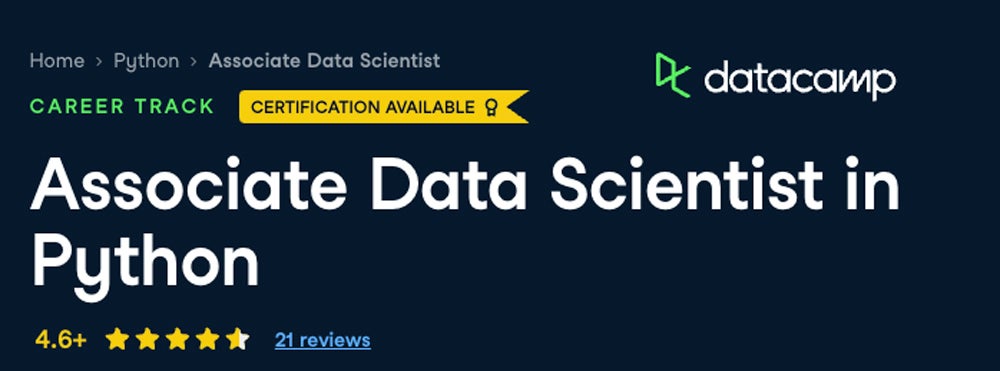
DataCamp is another well-regarded provider of data-related courses, and one of its highest rated is titled ‘Associate Data Scientist in Python’. It sets itself apart with its unique hands-on coding exercises, one of which involves manipulating and visualising data on Netflix movies. Language-wise, this course exclusively uses Python, but introduces learners to multiple libraries including pandas, Seaborn, Matplotlib and scikit-learn. Knowledge of Python is not required for this course, as the necessary skills are taught along the way.
$13/£11 a month for full access.
Nine weeks at ten hours a week.
None.
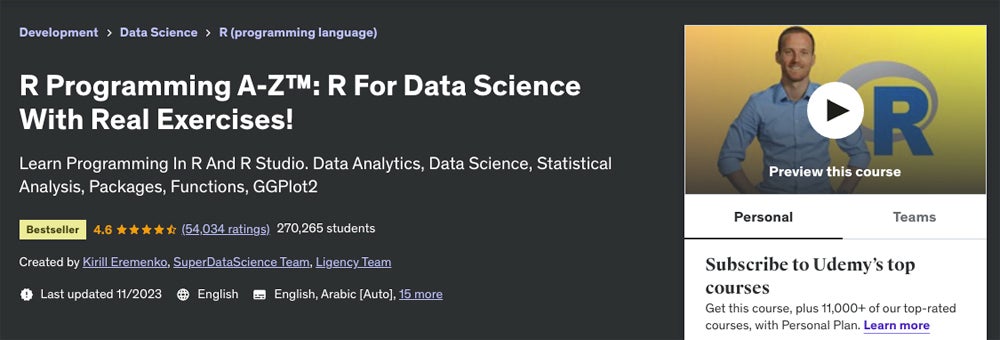
While many data science courses are taught with Python due to its popularity and simplicity, ‘R Programming A-Z’ on Udemy is aimed at learners looking to get to grips with R and RStudio. R is a powerful language used frequently in data science for handling complex data sets. This course assumes no prior knowledge and starts with the very basics of R programming, including variables and for() loops, before looking at matrices, vectors and more advanced data manipulation. Large projects that help cement learning use real-world financial and sports data.
$109.99/£69.99.
10.5 hours of lectures + exercises.
None.
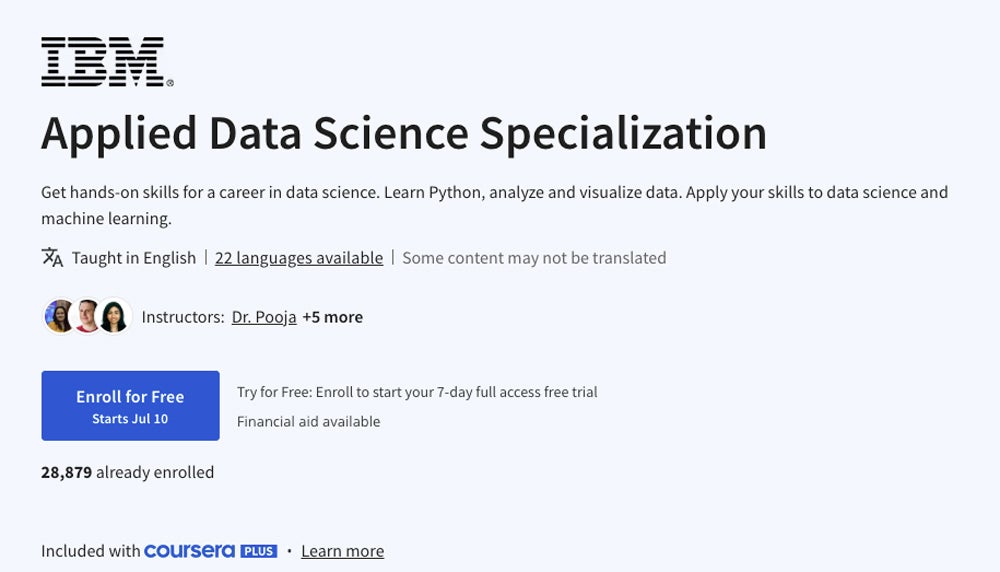
“Applied Data Science Specialization,” another course by IBM, fast tracks data science beginners towards skills with real-life applications. Python skills for data analysis and visualisation are taught assuming no prior knowledge of the language and are then put into practice in the interactive labs and projects. These cover the extraction and graphing of financial data, creation of regression models to predict housing prices and visualisation of data treemaps and line plots on Python dashboards. By the end of the course, participants should have solidified their practical Python skills to the extent that they can confidently explore more advanced topics like big data, AI and deep learning.
$49/£38 per month after a seven day free trial.
Two months at ten hours a week.
None.
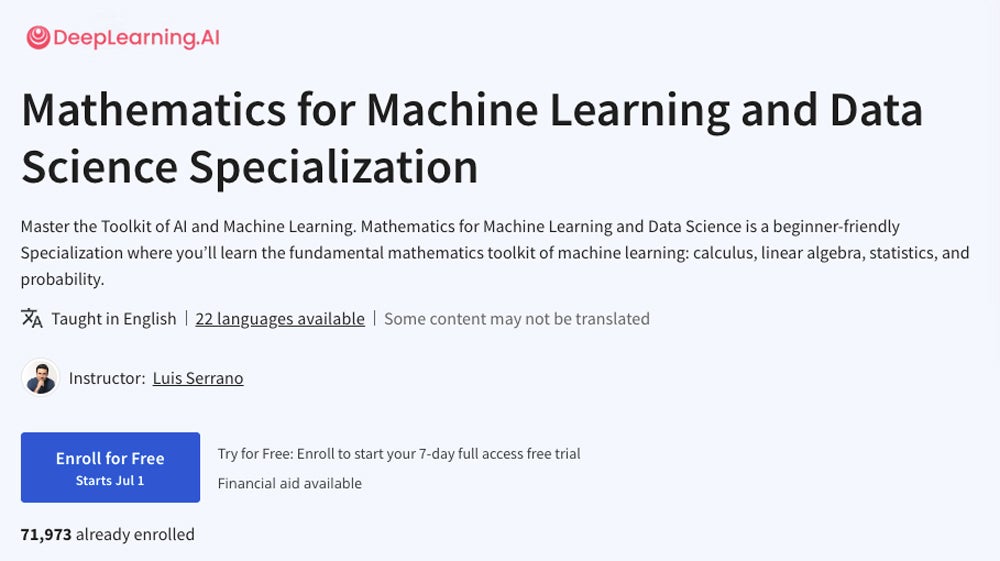
As the title suggests, this course from DeepLearning.ai has a particular focus on mathematics for data scientists. Mathematics underpins the profession and is essential for understanding algorithms, cleaning data, drawing insights, visualisation, evaluating models and more. The course covers the fundamental mathematical toolkit of machine learning, including calculus, linear algebra, statistics and probability. Learners say it provides a good entry point into the theory of data science and the lab exercises are practical.
$49/£38 per month after a seven-day free trial.
Six weeks at ten hours a week.
A high school level of mathematics and a basic knowledge of Python is recommended.
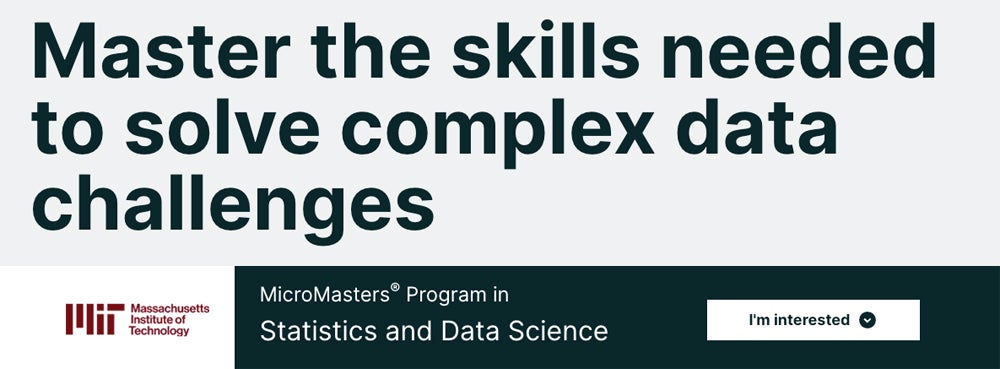
The “Statistics and Data Science with Python” course presented by the Massachusetts Institute of Technology is by far the most comprehensive course featured on this list. The so-called “MicroMasters” takes learners over a year to complete and prepares them for their first career in data science. It provides a graduate-level introduction to concepts such as statistical inference and linear models, as well as practical experience building machine learning algorithms. It is designed to fit around a day job or university study while not compromising on the level of content.
$1,350/£1,186.
One year and two months at ten hours a week.
University-level calculus and comfort with mathematical reasoning and Python programming are recommended.
The key difference between data analysis and data science is that the former primarily looks to interpret existing data, while the latter involves creating new ways of doing so.
Data analysis focuses on examining datasets to identify trends, draw conclusions and support business decisions. It involves cleaning, transforming and modelling data to extract useful information, often using tools like Excel and SQL. It is performed by data analysts who are typically hired into a wide range of industries, including marketing firms, government agencies, healthcare providers, financial institutions and more.
Data science, on the other hand, integrates data analysis with advanced machine learning algorithms, predictive modelling and big data technologies. Data scientists often develop new tools and methods to handle complex problems and derive insights from large-scale datasets. Skills required for this include proficiency in programming languages such as Python and R, as well as a deeper understanding of statistical methods and machine learning.
SEE: 10 Signs You May Not Be Cut Out for a Data Scientist Job
Data science remains in high demand in 2024. The IDC estimates that the amount of data worldwide will reach 291 zettabytes by 2027, and as growth continues, more data professionals will be needed to manipulate and interpret it. Furthermore, many of the key industries within which data scientists work are expanding, such as AI, machine learning and the Internet of Things, while others provide core services such as healthcare, energy, finance and logistics. Salaries also reflect this high demand as, according to Glassdoor, the average base pay of a data scientist in the U.S. is $113,000.
Opinions on online data science courses vary within the industry. For some, there are enough free resources available through platforms like YouTube to render paid courses unnecessary. They may also argue that there is no substitute for hands-on experience, and that even beginners should learn the necessary skills by downloading an open-source dataset and attempting to manipulate it themselves.
However, the key to learning anything new is persistence, and it can be difficult to remain motivated without a defined learning programme to follow, coursemates to connect with or a course fee at risk of going to waste. For individuals with a tendency to start projects but not finish them, an initial investment in a structured course may provide the motivation they need. Many paid courses also give direct access to qualified instructors who can provide tailored help that would otherwise not be available.
Ultimately, there are certainly opportunities to break into data science without taking any type of online course. However, if structured learning provides the skills or motivation you desire, then the investment may be worth it.
When assessing online courses, TechRepublic examined the reliability and popularity of the provider, the depth and variety of topics offered, the practicality of the information, the cost and the duration. The courses and certification programs vary considerably, so be sure to choose the option that is right for your goals and learning style.